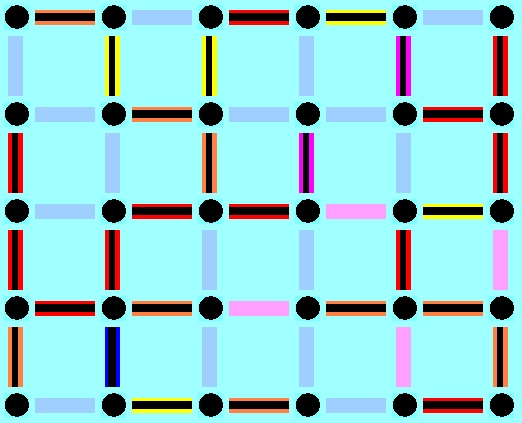 CMIS 160
CMIS 160 Discrete Mathematics
Erich Prisner
UMUC SG
Spring 2002
 CMIS 160
CMIS 160
Discrete Mathematics
Erich Prisner
UMUC SG
Spring 2002
![]() a) First we don't care about the colors. Then there is only one wall
of length 1, two of length 2, and three of length 3.
Here are 3 walls of length 7. The question is: How many different
walls of length 6 are there (where walls of the same shape but
different colors are considered to be the same here)? List all these shapes.
a) First we don't care about the colors. Then there is only one wall
of length 1, two of length 2, and three of length 3.
Here are 3 walls of length 7. The question is: How many different
walls of length 6 are there (where walls of the same shape but
different colors are considered to be the same here)? List all these shapes.
![]()
b) How many different uncolored walls of length n are there? Find a recurrence equation between the numbers. Solve the recurrence equation.
![]() c) Now we recognize color. The two length 7 walls to the right are
therefore now considered different, although we didn't distinguish
between them in parts (a) and (b). How many different colored
walls of length 7 are now possible? This time it is not necessary to list
all these walls.
c) Now we recognize color. The two length 7 walls to the right are
therefore now considered different, although we didn't distinguish
between them in parts (a) and (b). How many different colored
walls of length 7 are now possible? This time it is not necessary to list
all these walls.
![]()
d) What is the general formula for the number of walls of length n now? Again use recurrence equations.
|
e) Finally not the length but the total cost (defined as the sum of the cost of all bricks) of the walls is the issue. To the right you see three different walls of total cost 10 each. How many different walls of total cost 5 are there? |
Then find a formula for the number cn of walls of fixed cost n.
Go to Project # 4.
Go back to Project # 2.